A Guide to Chicken Breeds
This article is written by Pet Circle veterinarian Dr Emilee Lay BVSc BSc (Vet) Hons
How to Choose Between Chicks, Pullets or Hens?
Chicks

Raising chickens as chicks can be a fun and rewarding experience - leaving you with chickens who are quite tame and accustomed to handling. However, alongside initial expenses such as a brooder and feed until they reach point of lay, there is also a risk of accidentally raising a rooster. Depending on where you source your chicks the hatchery or breeder may offer a rooster return policy, but this will differ from place to place. If your local council regulations do not allow for roosters you will have to be prepared to try and rehome any accidental roosters.

If youâre wanting to raise chicks from day one, make sure you have an appropriate set up. This includes:
- Heat Lamp X 2
- ThermometerÂ
- BeddingÂ
- Feeder
- WatererÂ
- Commercial chick starterÂ
- A plastic tub/cage or purpose built brooderÂ
Monitor your chicks behaviour carefully. Chicks that are too cold will spend all their time under the heat lamp and chicks that are too warm will be staying around the edges of the brooder.
Point of Lay/Pullets

Are you ready and rearing to get straight into having a fresh supply of eggs and some beautiful feathered friends? Then look no further, point - of - lay chickens are - as their name suggests - ready to lay! Unlike hatchlings, point of lay chickens require no additional set up asides form a large enclosure, a roost and a nestbox. There is no stress about accidental roosters either. Ensuring you select the appropriate breed for your housing situation is a must. Consider whether youâre after a hybrid high egg production chicken or a heritage breed/purebred chicken. As these chickens are fully grown, they may take some time adjusting and getting used to being handled.
Mature Hens
Are you perhaps looking to provide a retired chicken a place to wander around? Mature chickens can still make fantastic pets, and although their egg laying capacity is not what it used to be, they are fabulous to have around the backyard.Â
Where to Buy/Adopt Chickens

Check out your local Poultry Club or Show to find reputable breeders and to see some of the amazing breeds of chickens on offer. On occasion poultry auctions are also held at these shows. Your local hatchery will also have chickens and chicks available depending on the season. Day old chickens that have been sexed can also be acquired from large hatcheries and private breeders. Larger hatcheries and breeding facilities will have chicks and chickens that come vaccinated against Marekâs disease, Newcastle disease, infectious laryngotracheitis, and infectious bursal disease.Â
Although your local produce store, pet shop or online trading sites may have chickens available, it is important to see if you can find out where these chooks have been sourced from, to ensure they are raised in a hygienic and healthy environment.
What to Consider When Keeping ChickensÂ

Â
If youâre after eggs, then make sure to look at the productivity of the breed of chicken you are purchasing. Chickens bred specifically for egg laying, often have a shorter lifespan, with 2-3 years of high egg production which can taper off. On the other hand heritage chickens often have a longer lifespan, lower egg production and can be prone to broodiness. Chickens bred for dual purposes are the best of both worlds, with good meat coverage and slightly above average egg production. If youâre after a pet chicken, then consider the temperament of the breed, as well as the space they require. You may also want to delve into noise levels - especially if you live in an urban environment. Although noise levels cannot be guaranteed between individual birds, general breed assumptions can be made.
What is Broodiness?
If your main goal of keeping chickens is for their eggs, you may want to consider whether that particular breed of chicken is broody or not. Broodiness occurs when hens decide to incubate and hatch their eggs. They will spend prolonged periods of time sitting on top of their eggs, become increasingly territorial about their nests and some will begin to pluck their feathers. Broodiness is a desirable trait, if you wish to breed chickens and have a ânaturalâ incubator. On the other hand if you are keeping chickens mainly for their egg production, then broodiness can stop egg laying and potentially trigger other hens to become broody as well
Egg Layers and Hybrid Breeds
As mentioned in our article âHow to Start Chicken Keepingâ. Popular egg laying breeds include Isa Browns, Leghorns and Australorps. Hy-Line or Hyrbid chickens (which are often cross breeds of these chickens) have also been specifically bred to create a super chicken when it comes to producing eggs.
 Chickens bred for egg production mature early to allow them to start laying eggs from anywhere between 16 to 22 weeks of age. These high egg producers are consistent layers, and will lay close to an egg a day for up to two years. Hybrid chickens are less prone to going broody compared to their purebred counterparts. These are very reliable, friendly chickens, however as a result of being bred for rapid egg production they often have a shorter lifespan compared to pure bred chickens. Depending on the breed, they can produce large cream to light brown eggs.
Australorp: Available in Black, White and Blue, 250-300 eggs per year, relatively gentle but shy in nature,medium to large chicken, can go broody. Great dual purpose breed.

Leghorns: Most commonly available in white, 250-320 eggs per year, relatively independent, somewhat noisy but highly active, small but muscular birds, rarely broody. Great dual purpose breed.
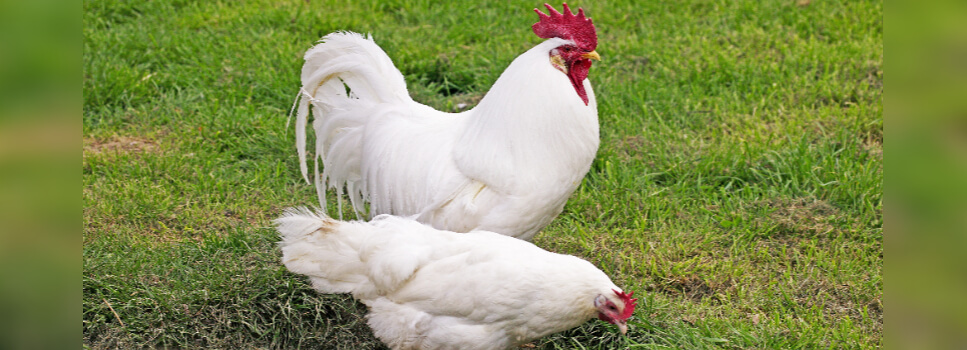
Isa Browns: Prolific egg layer, moderate sized chicken, highly affectionate and gentle, up to 300 eggs per year, great as a starter chicken
Hybrids: Often a variation of a cross between Australorps, Rhode Island Reds, Leghorns, bred for egg production, up to 300-320 eggs per year, friendly temperaments, shorter lifespans

Bantams
Bantams make for phenomenal pets, these small, cute, âminiâ chickens have great,calm, friendly personalities and enjoy a cuddle. Rather than being a âfunctionalâ breed these adorable balls of feathers with legs are a more ornamental type of chicken. Most bantams will grow up to 20cm in size. Although not traditionally kept for their egg laying abilities, they will start laying from about 7-9 months of age and can live (if well cared for) for up to 7-8 years. These chickens are prone to being quite broody. Bantams are not only characterised by their small stature, but very fluffy, feathered feet. There are many bantam chickens of standard breeds, but true Bantams have no standard counterparts.
Silkies: Characterized by their silky fur-like feathers, blue skin and green ear lobes, 2-3 eggs per week, relatively quiet birds, small to medium in size
Â
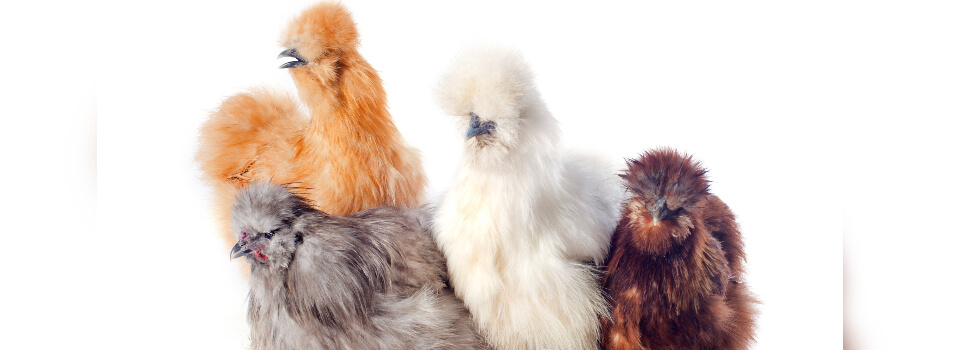
Pekins: Available in a variety of colours, 2-3 eggs per week, relatively quiet, friendly and sociable breed, a true bantam, can be broody
Â
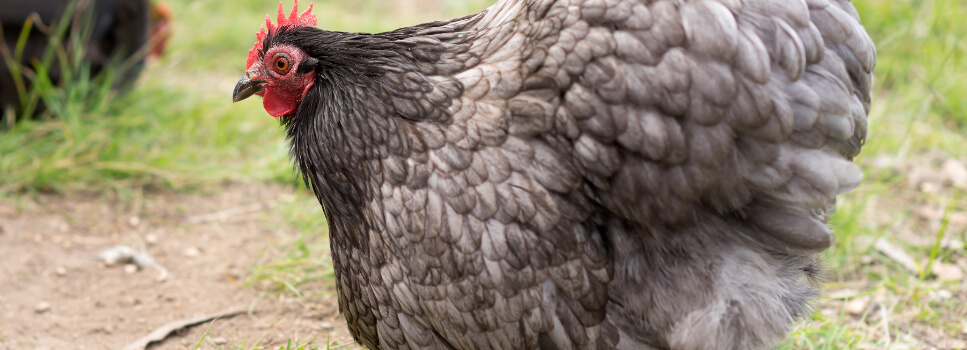
Easter Eggers: a cross between Araucana and Ameraucana breeds, 3-4 eggs per week, hardy, calm and friendly, tolerate cold weather
Purebred and Heritage Breeds
Heritage or Purebred chickens are hardy, dual purpose chickens. These old fashioned breeds are generally healthier and have a longer lifespan compared to hybrid or high egg producing chickens. In some instances they can live up to 8-10 years. They come in a range of colours, shapes and sizes and can lay eggs of various colours depending on the breed. Some breeds such as Buff Orpingtons are renowned for egg laying as well as the quality of their meat. Heritage chickens are generally much larger and prone to being broody - compared to hybrid and bantam chickens. Heritage breeds are usually friendly, however can be quite vocal and active and may require more space to forage and exercise. The list of Heritage Breeds is quite long, so here are some popular heritage chickens!
Anconas: Bright red combs with mottled speckles, lay approximately 220-250 eggs a year, can be flighty
Barnevelder: Beautiful, dual purpose breed, lay approximately 200 eggs a year, slow growers, extremely friendly, medium sized chicken, available as a bantam as well, prefer to free range
Â

Â
New Hampshire: chestnut coloured, dual purpose breed, lay approximately 120-200 eggs a year, prone to going broody, great mothers, friendly and docile
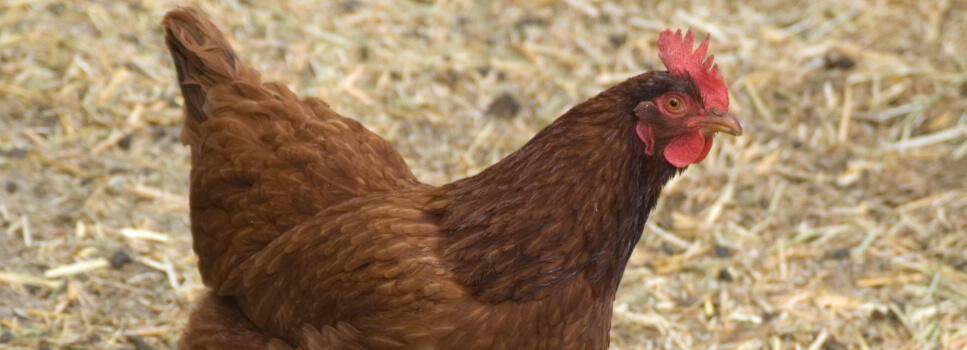
Australian Langshan: selectively bred to suit the Australian climate, compact, moderate sized hens, available as bantam as well, produce 3-5 eggs a week, friendly and docile
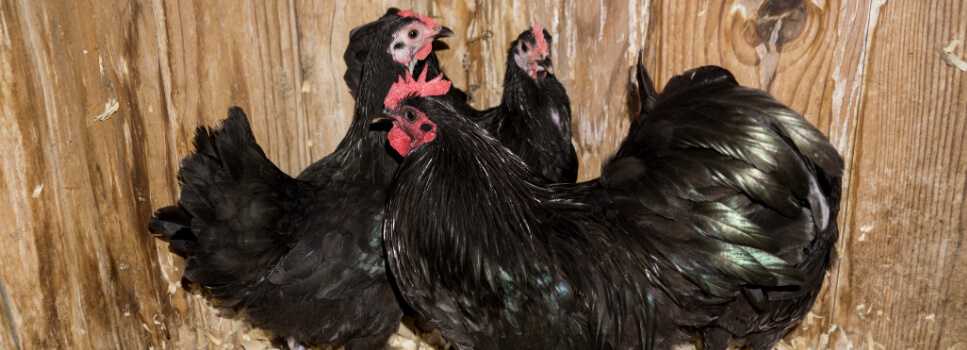
Plymouth Rock: large, barred black and white dual purpose bird, produce up to 4-5 eggs a week. Very docile and friendly, and are tolerant of cold climates, make great mothers

Sussex: Large dual purpose utility bird available in a range of colours, produce up to 200-250 eggs a year, require extra space due to size, extremely active, friendly and loves foraging and free ranging.
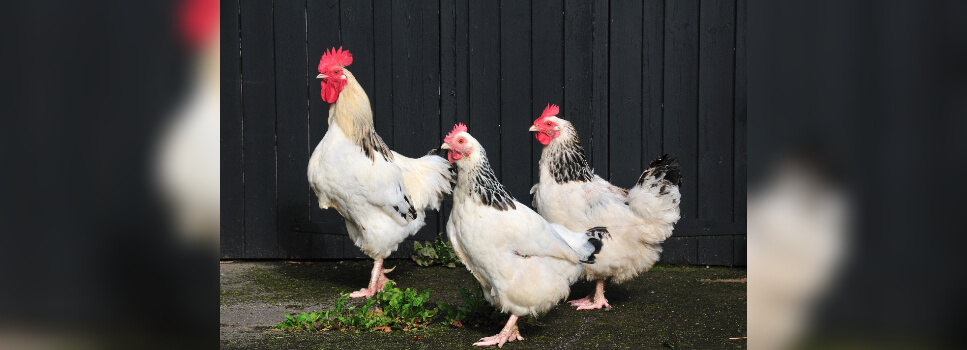
Wyandotte: moderate sized bird known for their stunning laced feather variations, reliable layers with up to 180-200 eggs a year, friendly, loud personalities, flourish well in free range settings, cold climate tolerant, heat intolerant, prone to going broody, make great mothers.
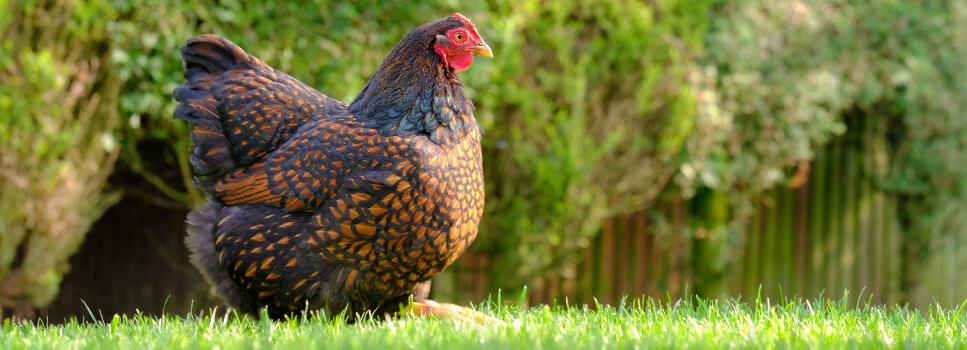
Orpington: moderate sized dual purpose chickens, lay approximately 200-280 eggs a year, tolerate cold conditions, care in hot weather, sweet, friendly personalities, tend to go broody, make great mothers.
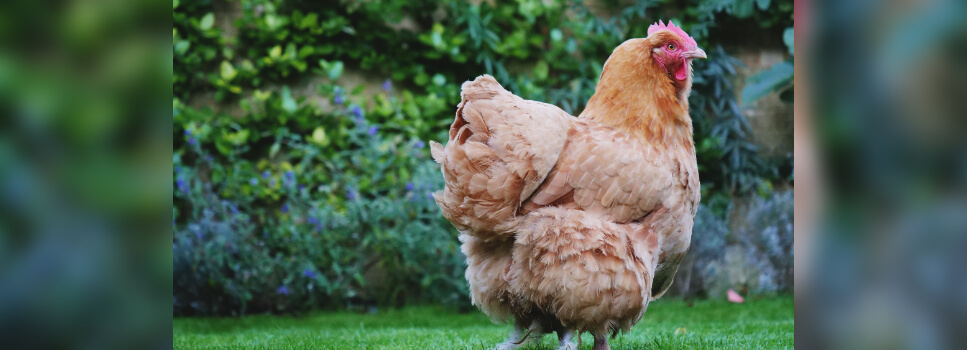
As you can see Chickens come in a variety of beautiful shapes, colours and sizes!Â
Further Reading
Want to read more? Check out our other articles:
Chicken Health and Preventatives
Understanding Chicken Behaviour
How to Keep Your Chickens Happy
Want to know more? Check out our Discover Page for more tips on keeping your pets happy and healthy.

























